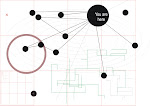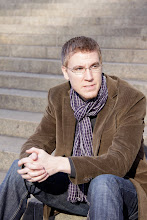 The human body is a magnificent thing: beautiful and strong and yet dying and weak. Our theological heritage has often wavered and questioned the goodness of the body. Should we be the proto-Gnostics that Paul discusses? Or should we follow contemporary Christian Gnostics who seem to disregard the body and its worth as simply a home for the all important spirit and spiritual life? So what do we do with this physical and yet non-physical reality of the body.
The human body is a magnificent thing: beautiful and strong and yet dying and weak. Our theological heritage has often wavered and questioned the goodness of the body. Should we be the proto-Gnostics that Paul discusses? Or should we follow contemporary Christian Gnostics who seem to disregard the body and its worth as simply a home for the all important spirit and spiritual life? So what do we do with this physical and yet non-physical reality of the body.To overcome this Platonic dualism we need to realize that we do not have bodies (which seems to say that the true us can be had apart from the bodies we are attached to) but that we are our bodies. Our Greek philosophical heritage tends to break the reality of the body into physical and non physical (body and spirit), whereas the Hebrew reality sought to unify the reality through something they called “nephesh” or literally “bodyspirit.” The two were inseparable.
Now this entry is not about theology per se, but rather art and particularly the work of Adrienne Grossmann…my niece. As a recent graduate of Stout College in Menominee Wisconsin, Adrienne has emerged as a fine artist in her college years. Many of the prints below come from her senior show which focused largely on the human form. While I have not been privy to her development and discussion on her work, as a proud uncle, I can enjoy and reflect on her works from my theological soap box.

 As I attended to Adrienne’s work the aforementioned theological considerations rose to mind. Her work is at times overtly and others blatantly sexual with the proximity of male and female forms. And yet I find the single bodies the most compelling as one truly searching for honesty of meaning about our human constitution. It comes from a young woman exploring and reveling in the reality of her own embodiment as a sexual being. It seems it is a process of self-discovery and now bodied forth into the complexity of a lithograph. We are bodies that writhe in pain and ecstasy, strong and fragile, that both give and seek comfort through touch. And yet, the method in her making suggests (at least to me) a certain and peculiar movement…an alchemy…a mystery that thrives beyond scientific and biologic attempts at defining who and what we are.
As I attended to Adrienne’s work the aforementioned theological considerations rose to mind. Her work is at times overtly and others blatantly sexual with the proximity of male and female forms. And yet I find the single bodies the most compelling as one truly searching for honesty of meaning about our human constitution. It comes from a young woman exploring and reveling in the reality of her own embodiment as a sexual being. It seems it is a process of self-discovery and now bodied forth into the complexity of a lithograph. We are bodies that writhe in pain and ecstasy, strong and fragile, that both give and seek comfort through touch. And yet, the method in her making suggests (at least to me) a certain and peculiar movement…an alchemy…a mystery that thrives beyond scientific and biologic attempts at defining who and what we are.What does it mean that we are created as imago Dei? Can this be answered by one reality of physical likeness or rational and creative beings? Or even more recent assertions of relationality based in Trinitarian logic to overcome individualism and depreciating ecclesiologies? While cases for all can be made and perhaps should be, but not at the exclusion of others. I dare not divorce the imago from our physical reality, and yet it is not the totality of our existence and relation to the Creator. We must take this physical stuff, our embodied reality, seriously.
Adrienne’s art helps remind me of my physicality and its correlative complexities. The beauty of her work suggests to me, the beauty of humanity, and ultimately our Creator.
As Christians we dare not forget the goodness of creation, the beauty of our bodies and that they are our only means for appreciating, examining, journeying in this remarkable realilty.








